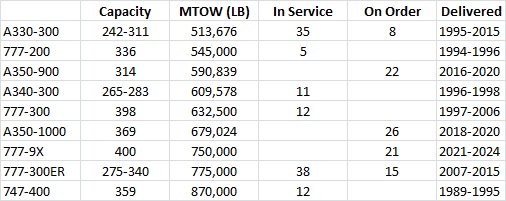Cathay Pacific’s order for 21 Boeing 777-9X aircraft suggests that the Hong Kong carrier is content to keep the status quo of its fleet composition.
As major aircraft orders go, it is hard to trump the dramatic effect of Cathay’s announcement on Friday, 20 December 2013 that it will buy 21 Boeing 777-9Xs for HK$58 billion ($7.5 billion). The announcement arrived at nearly 6pm, just as the rest of Asia’s airline industry was walking out the door for the Christmas holiday.
Cathay followed it one week later with another Friday surprise, announcing an order for an additional three 777-300ERs and a single 747-8F.
The 777-9X sale marks the first Asian commitment for the successor to the popular -300ER, of which some 351 examples are in service with the region’s carriers. The Cathay announcement also came just one month after Boeing’s massive order haul in Dubai, where it garnered orders and commitments for 182 777-9Xs and 43 777-8Xs.
Ironically, all this comes less than a year after Airbus chief executive Fabrice Brégier waxed dismissive about the 777X. “The 777 is dead, one-to-one, against the A350-1000,” he said early in 2013.
Although Airbus has taken pains to cast the A350-1000 as a rival to the 777 family, Cathay’s orders for both types (it has orders for 26 A350-1000s and 22 -900s) suggest that it wishes to maintain the status quo in its fleet, with Airbus controlling the bottom half of its fleet in terms of maximum take-off weight (MTOW) and passenger capacity, and Boeing controlling the top.
Cathay Pacific fleet

Flightglobal Ascend
According to Flightglobal’s Ascend Online database, Cathay’s 35 A330-300s have an MTOW of 514,000lb (230t), while its 777-300
Cathay’s 12 747-400s have an MTOW of 870,000lb, and can carry 359 passengers.
In Cathay’s 777-9X announcement, it noted that the new type will be able to carry over 400 passengers, suggesting that the -9X, which has an MTOW of 750,000lb, is destined to fill the role now served by both its 747s and 777-300ERs, effectively replacing both types over the longer term.
The A350-900 should eventually replace the carrier’s small fleet of 777-200s and earlier examples of the carrier’s A330-300s. The A350-1000 will likely replace both the A340-300s and 777-300s. This will leave the top-tier to the 777-300ER and 777-9X.
“There is a place for both the A350-1000 and 777-9X in Asia-Pacific fleets, as evidenced by Cathay’s selection of both aircraft,” says Flightglobal Ascend consultant Rob Morris.
“Cathay’s commitment may increase focus on the 777-9X from other potential customers. With five airlines now committed, delivery slots in 2020/21 are probably increasingly hard to find. I also suspect Boeing will want to control the early customer pool to only a few operators to improve the entry into service experience and avoid any 787-like problems.”
Source: Cirium Dashboard



















